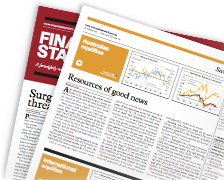Navigating year-end unit pricing and strategic considerationsBY EDWARD AU | FRIDAY, 28 JUN 2024 4:19PMAs we approach the end of another financial year, the complexities surrounding unit pricing in financial services come sharply into focus. Beyond the routine calculations and reconciliations, year-end presents unique challenges and opportunities for institutions like super funds and life insurance companies managing unit pricing. GBST's tax consultant, Edward Au, takes a look at navigating tax in unit pricing through the lens of people, process, and technology. This seemingly straightforward process may not seem the most interesting of subjects but behind it lies a complex web of tax considerations, operational challenges, and technological limitations. Here's what he found. Understanding the tax element Unit pricing lies at the heart of investment management - it's a mechanism that determines the value of each unit in a fund or trust based on the total value of its assets. And tax plays a pivotal role in unit pricing. Super funds and life companies must factor in their tax balances when calculating the net asset value and subsequently, the unit price. This includes not only current tax liabilities but also deferred tax assets or liabilities, especially concerning unrealised positions in assets like shares and bonds. Challenges in implementation Implementing tax considerations within unit pricing processes presents multifaceted challenges. Firstly, the industry is transitioning towards daily unit pricing, necessitating rapid and accurate calculations within tight timeframes. This pressure often leads to simplified tax calculations, conducted through short form processes rather than comprehensive assessments. Enhanced scrutiny is essential as institutions conduct year-end checks on unit pricing calculations. Proactively investigating potential issues and ensuring alignment of tax assets and liabilities with reconciliations and policy frameworks are crucial steps. Updating tax estimates promptly and addressing any discrepancies through timely 'true ups' safeguard against unforeseen surprises. People: The human element The human factor in tax and unit pricing is significant. Tax professionals and accountants tasked with this responsibility often juggle multiple roles, leading to competing workloads and potential bottlenecks. Moreover, unit pricing expertise requires a niche skill set blending tax knowledge, technical proficiency, and data management capabilities. As organisations undergo consolidation, individual entities inherit unique unit pricing processes, compounding the workload and introducing additional complexities. Amidst the year-end rush, the human element remains paramount. Scheduling regular team check-ins helps to balance workloads and provide necessary support during this critical period. Recognising the heightened demand for ad hoc analysis and tighter turnarounds, clear escalation channels and robust communication frameworks become indispensable. Process: Navigating complexity The unit pricing process is intricate, involving extensive reconciliations between various systems and data sources. Manual reconciliations, often conducted using Excel, are time-consuming and prone to errors. Furthermore, the need for increased frequency in reconciliations adds to the operational burden, highlighting the necessity for more efficient processes. Technology: Bridging the gap While technology has transformed many facets of financial management, the unit pricing domain remains underserved. Excel remains a ubiquitous tool due to the lack of end-to-end solutions catering specifically to tax in unit pricing. This reliance on Excel introduces risks such as limited automation, scalability issues, and data governance challenges. Technology serves as the cornerstone in navigating the complexities of year-end unit pricing. Instituting a tech freeze on unit pricing models ensures stability and accuracy during critical calculations. Moreover, establishing clear IT support protocols, including after-hours assistance, reinforces operational resilience and readiness. There is a solution currently available that addresses these challenges by automating tax calculations and streamlining data management. It offers benefits across people, process, and technology dimensions. Its ability to integrate with existing systems and provide accurate, auditable tax calculations presents a compelling case for adoption. Embracing innovation ahead As the financial landscape evolves, so too must our approach to unit pricing. Embracing innovative solutions that integrate advanced technologies and streamlined processes will be pivotal in driving efficiency and compliance. By prioritizing strategic planning, investing in human capital, refining analytical models, and leveraging robust technological frameworks, financial institutions can not only navigate the complexities of year-end unit pricing but also seize opportunities for growth and differentiation. In conclusion, while the end of the financial year may present challenges, it also offers a chance for institutions to showcase their resilience and readiness. By embracing proactive strategies and leveraging the power of technology, financial institutions can confidently navigate the complexities of year-end unit pricing, setting a solid foundation for continued success in the dynamic landscape of investment management. |
Latest News
Retirement Income Covenant still weak: APRA, ASIC
AustralianSuper unleashes raft of investment and fee changes
GigSuper goes into liquidation
Australian Retirement Trust delivers 11.3% in FY24
Cover Story

The super, super fund
CHIEF EXECUTIVE OFFICER
AWARE SUPER
























